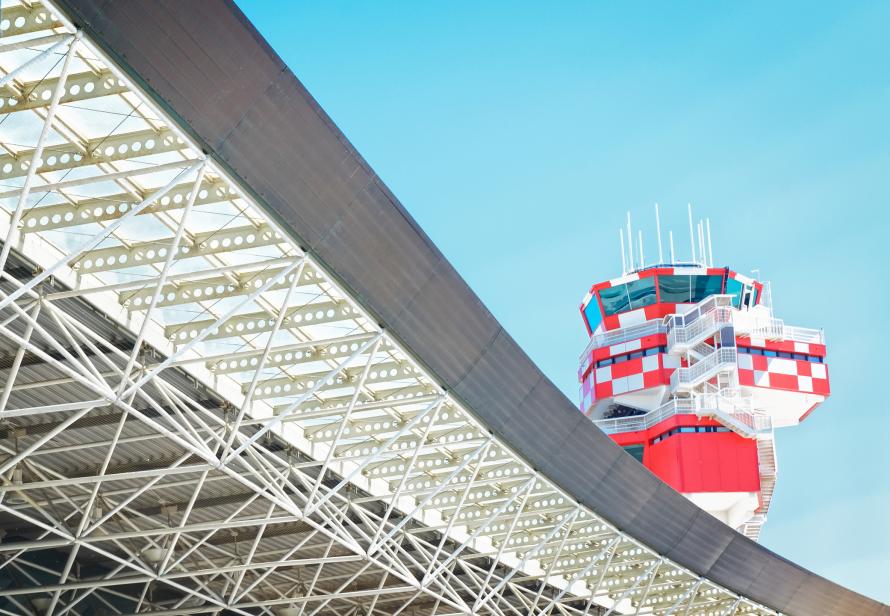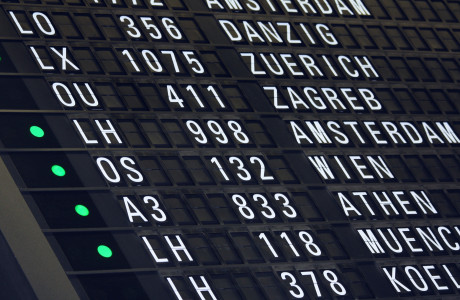
Rome’s Airports: Fiumicino, Ciampino & Urbe
Riding a Vespa past the Colosseum, walking down the Spanish Steps with a gelato in hand, and watching the sun set over St. Peter’s Basilica – few places evoke such picturesque imagery as Italy’s capital. Rome is not only one of the most historically significant cities in the world but also the center of a global religious community and a vibrant, modern metropolis. In this article, you'll find everything you need to know about the city's airports and what you shouldn't miss when visiting Rome.
Contents:
Overview of Rome’s Airports
Like other major European cities such as London and Paris, Rome is served by several airports. The city’s commercial and international air traffic is primarily concentrated at the largest of the three airports: Rome Fiumicino. However, regardless of which airport you arrive at, getting into the city is always fast and convenient.
Newest & Largest: Rome Fiumicino Airport
Leonardo da Vinci Rome Fiumicino Airport (FCO) is named after one of the most iconic Italians in history. Fittingly, it is the largest airport in Italy and the eighth busiest in Europe, with nearly 50 million passengers in 2024. "Fiumicino" refers to the town where the airport is located – about 30 km south of Rome, right on the Mediterranean coast.
Although the airport was officially inaugurated in 1961, it had already begun operations in August 1960 to accommodate the increased traffic from the Olympic Games held in Rome that summer. At the time, the city’s existing airports couldn't handle the volume on their own. Looking ahead, major expansion plans are in place: four new terminals and two additional runways could increase capacity to 100 million passengers per year, with sustainable energy systems powering the airport in the future.
Despite its location outside the city, reaching central Rome from the airport is remarkably easy. Several high-speed trains operate regularly, and multiple bus lines are available as well. The fastest option is the Leonardo Express, which departs every 15 minutes from the airport station and reaches Rome's main Termini station in just 30 minutes with no stops.

Historic Roots: Rome Ciampino Airport
Officially named G.B. Pastine Rome Ciampino Airport, this airport lies just outside the city’s ring road. It served as the city’s primary airport for many years – in part due to its age. Opened in 1916, it is one of the oldest airports in the world still in operation.
In its early years, Ciampino witnessed several historic events: the first airship to reach the North Pole took off from here, and a pioneering prototype flight of what would become the modern helicopter was conducted here based on designs by engineer Corradino D’Ascanio (who later helped design another icon of Roman transport – the Vespa scooter). After Fiumicino opened, Ciampino increasingly handled smaller airlines and is now mainly served by low-cost carriers.
Thanks to its relatively central location, getting from the airport into Rome is quite simple. Travelers can use frequent shuttle buses or a combination of regional buses and trains from Ciampino Station. There’s also a direct bus link to Rome’s metro network.
Central Location: Rome Urbe Airport
Rome’s most centrally located airport lies within the city’s ring road, making it the only airport situated inside the capital itself. However, Rome Urbe Airport is mainly of historical significance. Opened in 1928 as Littorio Airport, it quickly became Rome’s primary airport. Severe damage during World War II required extensive reconstruction. Although the airport reopened after the war, commercial air traffic largely shifted to Ciampino.
Today, Urbe is primarily used for tourist helicopter flights and light aircraft. It has

Sights in Rome
If you’re flying to Rome, chances are you're not wondering what there is to see, but rather how much you can fit into a single trip. The “Eternal City” has been at the heart of Western civilization for over two thousand years. As the center of an ancient empire and the global seat of the Catholic Church, it also offers all the cultural richness of a modern European capital. So, what should you make sure not to miss?
Villa Borghese
Despite the name, Villa Borghese is not a single building but an entire park complex. The renowned Galleria Borghese features impressive sculptures, and the park itself is well worth a visit. It boasts Renaissance-era buildings and panoramic views across the city.
Ancient Architecture
The Colosseum is world-famous, but it's far from the only Roman structure worth seeing. The city is filled with ancient landmarks like the Roman Forum and the Pantheon. If you're not keen on crowds, you'll appreciate the widely available audio guides for a more relaxed and informative visit.
Food & Drink
Italian cuisine enjoys a stellar reputation – and Rome lives up to it. Roman pasta dishes are especially popular, with four classic sauces standing out: Carbonara, Gricia, Amatriciana, and Cacio e Pepe. These recipes tend to follow strict, minimalist traditions that often get altered abroad, but they offer an authentic and unforgettable flavor experience.
If you’re planning a flight to one of Rome’s airports soon, we wish you a pleasant journey! To make your trip even smoother, don’t forget that you can save on parking at your departure airport by using our bonus program.



